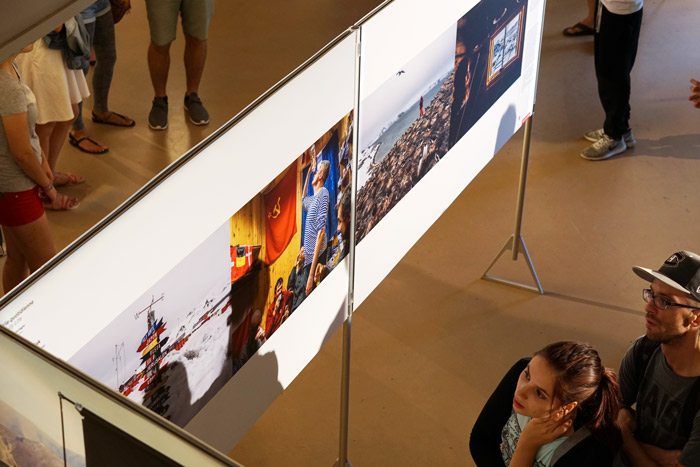I have always found Sept. to be a perfect time for reflection. After too many months of unproductive summer bliss, Sept. is a reminder that time is moving forward. We begin a new school year with high hopes and a lingering fear of future responsibilities. If you are caught up in the sublimity of Sept. it may be time to visit the 11th Montreal edition of the World Press Photo exhibit.
This collection of the year’s most evocative images is being held at Bonsecours Market in the Old Port of Montreal from Aug. 31 to Oct. 2. The exhibition features 150 award-winning photos from 41 photographers from around the world. Each year, viewers are presented with depictions of the human condition from a series of fascinating perspectives. The subject matter is often challenging, with graphic imagery illustrating some of the unfortunate tragedies that mark our generation.
As I walked through the gallery, I was drawn towards the eyes in the photographs—every pair told a story. The photos are linked by their ability to humanize the headlines that saturate Western media outlets. In the age of social media, click-bait photography of war and chaos in developing countries is often a tasteless representation of real human hardships. I approached a photo by Brazilian photographer Mauricio Lima of a member of ISIS in a Kurdish doctor’s office. The fighter’s skin is badly burned and the doctor applies ointment to sooth the victim’s wounds. The photo captures the intimate beauty of man helping man. When photojournalism can sometimes fetishize the horrors of war and violence, images in the World Press Photo exhibit tastefully convey emotion beyond mere shock value.
Near the end of the show, I stopped and faced an image taken by Australian photographer Rohan Kelly. The scene is of a massive storm approaching a sunny beach as a sunbather lies in the sand, staring at her digital device. This thought-provoking shot conveys the existential crisis of the 21st century. It is poignant in its portrayal of ignorance in the presence of imminent catastrophe. The photographer uses dramatic irony to convey a heightened sense of urgency in the viewer: One feels compelled to enter the photo and warn the people of the impending storm.
On the second floor of the gallery, there are three complementary exhibitions. One of particular interest is presented by Anaïs Barbeau-Lavalette in collaboration with photographer Guillaume Simoneau. The collection is called I Do Not Come From Outer Space and documents four recently arrived Syrian refugee families living in Montreal. In opposition to the demonization of refugees in some Western politics and media, this exhibit serves to tell human stories of transition and migration. It was an uplifting conclusion to the gallery experience. After images of deeply disturbing realities, we are reminded that there is hope on the horizon.
The World Press Photo exhibit runs every day from Aug. 31 to Oct. 2 from 10:00 a.m. to 10:00 p.m. and on Thursdays, Fridays, and Saturdays until midnight. It is located in De la Commune Hall at the Bonsecours Market (325 de la Commune Street East).









